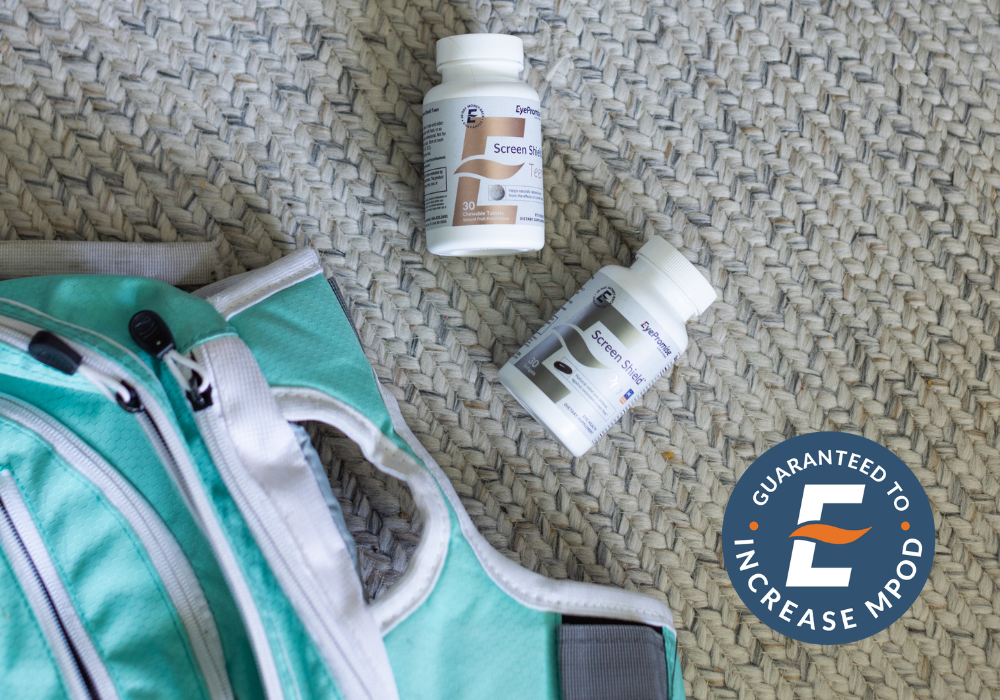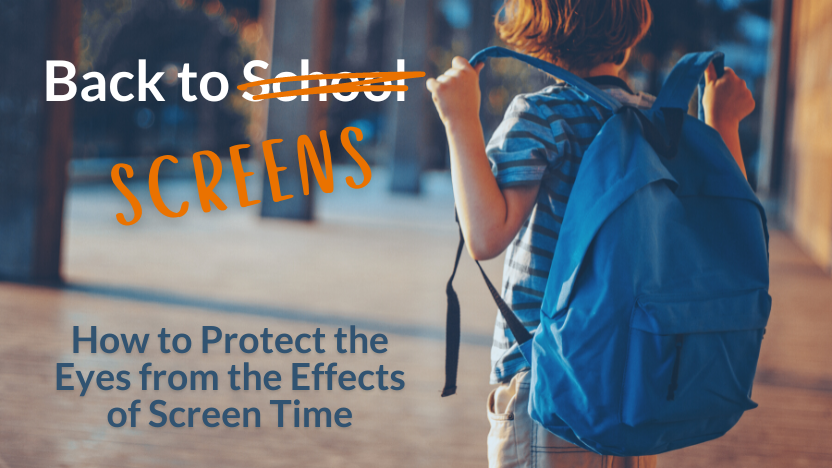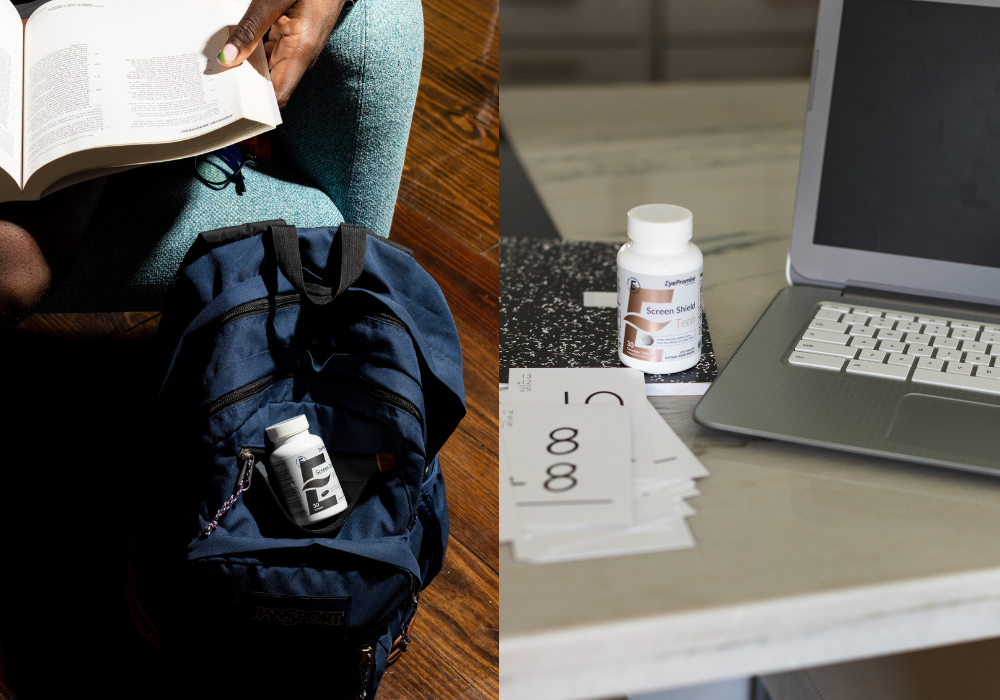Back-to-School Blues: Screen Time
Posted by EyePromise on Sep 7th 2023
School is back in session, and many are looking towards future assignments, social plans, and all the fun that comes with getting back into the classroom. However, one thing that your eyes are not looking forward to is the increase in screen time and blue light. While this may seem like a small concern, eye doctors notice an increase in vision-related screen time complaints right around the start of the school year. Here are a few ways to mitigate the blue light barrage.
What Is Blue Light?

First, let’s establish what “blue light” is. Blue light is part of the visible light spectrum and is closest to the ultraviolet (UV) light spectrum due to its high-energy, short wavelength light. It’s because of this type of wavelength that blue light can be dangerous. Like UV light, the shorter, higher energy wavelengths cause oxidation within cells, particularly in the eyes. Think of oxidation like rust on metal. A little isn’t terrible, but too much can be detrimental and could lead to vision loss.
You may be wondering, “How much blue light am I exposed to?” The truth is, we’ve always been exposed to blue light because the sun emits it. However, the sun isn’t the only source of blue light nowadays. Things like LED lights and digital LED screens also emit harmful blue light, which is why so many people experience vision-related screen time symptoms like eye strain and fatigue, headaches, and even trouble focusing. But blue light isn’t all bad.
In fact, we need blue light. Yes, you read that right. Blue light helps our bodies trigger certain hormones like the wake and sleep hormones. It’s what helps us regulate our sleep cycles. While this is a critical component of our health, it’s still important to reduce the amount of blue light reaching the back of the eye. That’s what the macular pigment is for.
Macular Pigment
Macular pigment is a natural blue light filter found in the back of the eye. It’s the body’s way of mitigating the amount of harmful light reaching the retina and damaging the sensitive cells responsible for vision. While everyone has macular pigment naturally, how well it works depends on how well you eat.
Macular pigment is made up of two dietary antioxidants called zeaxanthin (zee-uh-zan-thin) and lutein (loo-teen), which are found in leafy greens and brightly colored fruits and vegetables. Unfortunately, the standard American diet (SAD) is lacking on these ingredients, so the majority of the country has weak macular pigment and, therefore, weak blue light protection. There are a few ways to help protect your eyes from the increase in blue light exposure.
Rebuild Your Macular Pigment
The best offense is a good defense, and rebuilding your eyes’ natural blue light defense is a great way to protect your vision moving forward. It’s the only surefire way to protect your eyes 24/7. As we mentioned, getting the right nutrients is difficult through diet alone. That’s why so many eye care professionals recommend eye vitamins, and only one eye vitamin company is guaranteed to strengthen your macular pigment.
EyePromise®

EyePromise is the only line of eye vitamins guaranteed to support your macular pigment. That’s thanks to having the highest levels of dietary zeaxanthin (8+ mg) available in a vitamin, which protects crisp, clear central vision. With numerous clinically proven formulations for a variety of eye health needs, you’re bound to find an EyePromise vitamin that works for you.
Specifically for screen time, EyePromise offers the Screen Shield™ line, two products designed to help fortify macular pigment and relieve screen time-related symptoms. Screen Shield Pro is a comprehensive formula for adults 18 and up designed to support and protect the eyes from the negative effects of screen use. With ingredients like zeaxanthin, lutein, Omega-3s, and bilberry extract, Screen Shield Pro helps reduce eye strain and fatigue experienced during and after screen time with just one softgel a day.
Screen Shield Teen is the simplified version and designed for children ages 4 to 17. This one-a-day, fruit punch-flavored chewable tablet is a tasty way to give children the blue light protection they need, especially as more and more schools move towards online learning tools.
Learn more about the powerful Screen Shield line.
Set Screen Time Limits
We know this one seems impossible, especially because a lot of homework is completed online. However, setting limits, especially around bedtime, can be incredibly beneficial for eye and overall health. Additionally, having hours of the day dedicated to screen-free activities can help keep students (and adults) from excessive blue light exposure. The downfall of this is that it’s not 24/7 protection and doesn’t account for blue light from the sun.
Try a Screen Cover or Film
There are a few screen cover options that can help filter the blue light emitting from screens at the source. However, these covers don’t block 100% of the blue light and can distort what is seen on the screen. While minor distortions may not matter as much for schoolwork, it’s best to use this solution in combination with others as this is not a solution for sunlight exposure.
Get a Pair of Blue Light Glasses
Similar to screen covers, blue light-blocking lenses are intended to filter the harmful blue light before it reaches the eye. These lenses are offered by eye care professionals on prescription glasses, but there are also inexpensive, non-prescription options. Another option that is better when combined with other solutions, blue light glasses also don’t block 100% of blue light, can be easily lost or broken, and don’t help with blue light from the sun.
There are a few solutions for mitigating the visual symptoms associated with back-to-school screen time, but it’s best to consider an option that filters blue light from screens and the sun. EyePromise Screen Shield eye vitamins build the eye’s natural protection, giving and parents peace of mind regardless of blue light source. Learn more about screen time’s effect on eye health.


